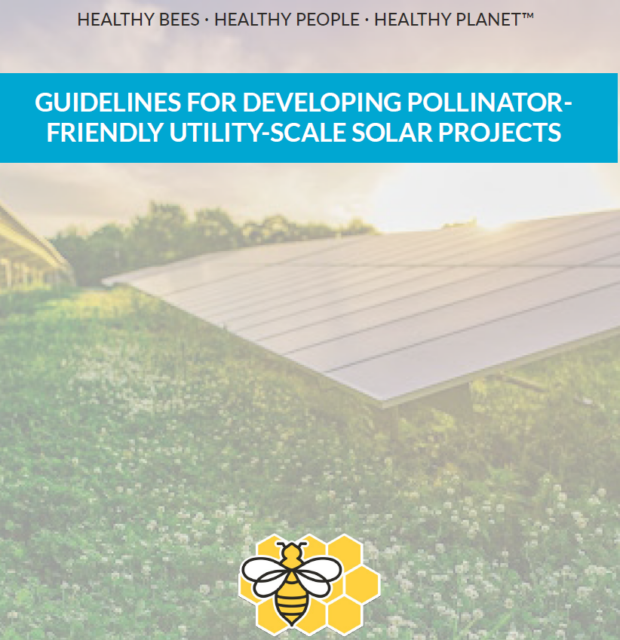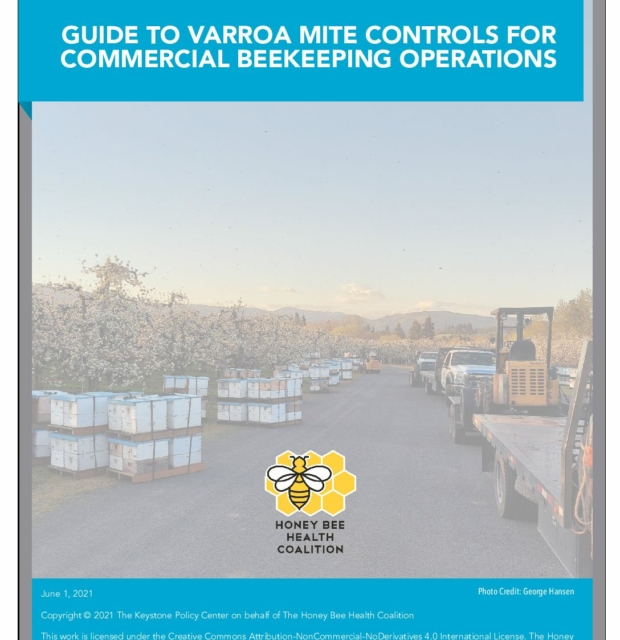News
Looking Ahead to a New Year, New Initiatives to Support Honey Bee Health
Throughout 2017, the Honey Bee Health Coalition substantially addressed the critical factors that influence bee health: hive pests and disease, forage and nutrition, and exposure to crop pesticides. There is still a great deal of work to do in 2018 and beyond, but beekeepers, farmers, researchers, and others are showing how collaboration and cooperation can make progress in this vital effort. Over the next several months, the Coalition is planning to be out and about at key events to highlight this progress and the work ahead, including:
- Nebraska Mid-Winter CCA Conference — January 9-10, 2018
- American Beekeeping Federation — January 9-13, 2018
- American Honey Producers Association — January 10-13, 2018
- American Bee Research Conference — January 11-12, 2018
- National Alliance of Independent Crop Consultants — February 14-15, 2018
- Commodity Classic — February 27-March 1, 2018
If you are planning to attend any of these events, please be sure to find our booth or sessions, say hello, learn about the important work we’re doing to support honey bee health in the context of productive agricultural systems and thriving ecosystems, and learn how you can help.
Bee Integrated Demonstration Project The Coalition’s Bee Integrated Demonstration Project is looking ahead to the final major undertaking of its pilot year. Participating beekeepers and project partners are preparing to track the colonies we began monitoring last spring through the final leg of their annual migrations. Beekeepers will then work with the Bee Informed Partnership to document annual mortality rates. These mortality counts will provide a primary measure of the project’s outcomes and — with any luck — a compelling demonstration of what a system of best practices can do for bee health.
The Coalition’s Bee Integrated Demonstration Project is looking ahead to the final major undertaking of its pilot year. Participating beekeepers and project partners are preparing to track the colonies we began monitoring last spring through the final leg of their annual migrations. Beekeepers will then work with the Bee Informed Partnership to document annual mortality rates. These mortality counts will provide a primary measure of the project’s outcomes and — with any luck — a compelling demonstration of what a system of best practices can do for bee health.
These overarching mortality counts will join data collected over the course of 2017. As participating beekeepers and farmers collaborated to establish improved forage, enhance Varroa management, and safely use crop protection products, project partners have been at their side offering technical support and collecting data intended to describe outcomes of each practice.
When lab work is complete, Coalition members will have the opportunity to come together to review this year’s data and begin putting together a picture of what can happen when proven practices are put into use together on the same landscape.
In the meantime, experience in working bee yards and farms is already refining Bee Integrated and informing activity of the Coalition as a whole. Perhaps most significant to date, working directly with beekeepers to follow the Coalition’s Tools for Varroa Management Guide has improved the project’s plan for applying the Varroa guide to commercial operations and brought additional on-the-ground experience to Coalition’s Hive Pest Working Group.
This promising pilot year has put Bee Integrated on strong footing to do even more in 2018. Work is underway to enroll three additional farmer-beekeeper pairs in North Dakota. These additional sites will allow the project to engage with a more complete cross-section of the ag and beekeeping communities and deliver results relevant to an even broader target audience. 2018 will also see an increased emphasis on communicating project outcomes through a summer field day, presentations at events, and more.
Support the Coalition
All of the Coalition’s achievements and exciting, new initiatives in 2017 happened thanks to its members’ support. As you and your organizations plan your end-of-year giving, please consider lending your support to the work of the Honey Bee Health Coalition.
Nutrition Challenge Reminder
If you are planning on attending the American Bee Research Conference, being held in conjunction with the 2018 American Beekeeping Federation  Conference and Tradeshow in Reno, Nevada, don’t forget to come to the Coalition’s nutrition competition event.
Conference and Tradeshow in Reno, Nevada, don’t forget to come to the Coalition’s nutrition competition event.
The six finalists — competing for their shares of up to $40,000 in prize money — will be presenting their ideas and proposals to a panel of judges in a “Shark Tank”-style showdown. Audience members will have the opportunity to ask questions during the event.
The finalists will pitching their innovative ideas to address the nutrition and forage challenges bees face today. The competition, generously supported by Monsanto, will hear from the finalists on January 11 and then announce the winners the following morning.
The Coalition is planning to live-stream the finalists’ presentations on its Facebook page (https://www.facebook.com/beehealthorg). Be sure to tune in!
Learn more about the competition by visiting honeybeehealthcoalition.org/nutrition-challenge.
In Case You Missed It
The Coalition released a variety of resources for growers, beekeepers, and other agricultural and bee health stakeholders in 2017. Be sure to check out the following and other resources available with other resources on our Tools and Resources Page:
- Soybean Best Management Practices
- Incident Reporting Guide
- Beekeeper and Grower fact sheets on Best Practices for Bee Health in Ag Landscapes
- CAST Paper on “Why Does Bee Health Matter? The Science Surrounding Honey Bee Health Concerns and What We Can Do About It”
- Priority Principles for Farm Bill Conservation Title
- Focus on Forage: Information on member habitat projects and how you can get involved
- Hive Management Resources
- Tools for Varroa Management Guide
- Beekeeper Insights on Honey Bee Nutrition Supplements

Almond Board of California (ABC) has been continuously funding research into next-generation farming practices since 1973, with a robust history of supporting Integrated Pest Management (IPM) and innovating reduced-risk pest management practices. In response to heightened bee losses in spring 2014, and as a culmination of industry-funded research on behalf of pollinator health, the Almond Board released in October 2014 a comprehensive set of Honey Bee Best Management Practices (BMPs) for California Almonds. They provide farmers, beekeepers, and all of those involved in almond pollination, including pesticide control advisors and applicators, with a standardized toolkit of practical guidelines for pesticide use and considerations before, during, and after almond bloom
 The BMPs include an 18-page guide as well as “quick guides” available as an easy reference, underscoring safe pesticide application practices while managed bees are present in orchards for pollination services. The first two of these are Honey Bee Best Management Practices Quick Guide for Almonds and Applicator/Driver Honey Bee Best Management Practices Quick Guide for Almonds. In 2016, ABC added another quick guide: Forage Your Way to Better Honey Bee Health to present the benefits and ways of planting honey bee forage within and adjacent to orchards to improve honey bee nutrition and health.
The BMPs include an 18-page guide as well as “quick guides” available as an easy reference, underscoring safe pesticide application practices while managed bees are present in orchards for pollination services. The first two of these are Honey Bee Best Management Practices Quick Guide for Almonds and Applicator/Driver Honey Bee Best Management Practices Quick Guide for Almonds. In 2016, ABC added another quick guide: Forage Your Way to Better Honey Bee Health to present the benefits and ways of planting honey bee forage within and adjacent to orchards to improve honey bee nutrition and health.
According to the California Almond Sustainability Program, almond farmers have widely adopted the Almond-Bee BMPs to ensure almonds are a bee-friendly crop:
- 94 percent of farms coordinate with their beekeepers to discuss any pest control treatment that may be needed during the pollination season. Farmers and beekeepers then share that information along the chain of pollination stakeholders — including pest control advisors, pesticide applicators and farm managers — to ensure all do their part to protect honey bees.
- When fungicides are needed to protect the developing crop from disease, 89 percent of farms applied those materials in the late afternoon or evening, when bees and pollen are not present.
- 94 percent of almond farms avoid applying insecticides during almond bloom, as alternative treatment timings are available to control those pests. In addition, California Department of Pesticide Regulation Pesticide Use Reporting shows a dramatic decline in insecticide use during almond bloom.
- 93 percent of almond farms provide clean water for bees to drink while pollinating.

